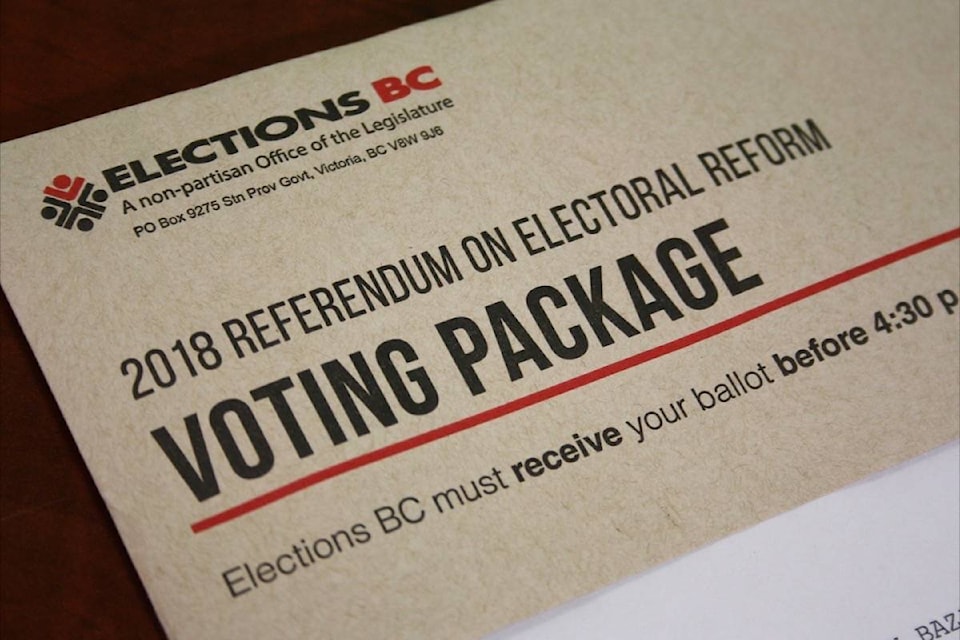Vancouver Island has been talking politics for months, and now our province needs another vote from us.
We should be turning some of our attention to the current referendum on proportional representation. Mail-in ballots are due by the end of November.
Whatever the will of the voters turns out to be, we’ll have a say in determining what electoral system we feel will work best for us. That may mean retaining the current first-past-the-post system, or it may mean moving to one of three other options: mixed-member proportional, dual-member proportional or rural-urban proportional.
All of the three new options, because they’re unfamiliar, seem more complicated than first-past-the-post, but we hope that whatever motivates voters, it’s not fear of the unknown or a reluctance to take measures to make an informed decision.
It’s natural to focus on what differentiates the systems, but the three new systems would all still give voters either their first choice, or a consensus first choice – more on that in a moment – and then fill in whatever gaps need to be filled to achieve proportional representation.
Mixed-member proportional starts with first-past-the-post MLA choices, then adds regional MLAs from party lists. Dual-member proportional also starts with first-past-the-post choices, supplemented by second MLAs from under-represented parties in the ridings where those parties had the greatest support. Rural-urban proportional uses MMP in rural areas and a ranked balloting system in urban areas to select the MLA candidates that the most voters can agree on.
Proportional representation does come with leaps of faith – that party lists would provide the best candidates, that ballots would be comprehensible, or that balancing third-choice party seats could be done in a way that’s fair to all regions.
On the other hand, the opposite of proportional representation must be disproportional representation, and if that’s what we have, is that what we want? It’s worth taking the time to learn about this; it’s worth taking the time to think about this.
GUEST COLUMN: Proportional representation curbs extremist movements
GUEST COLUMN: B.C.’s referendum vote is dishonest, misleading
